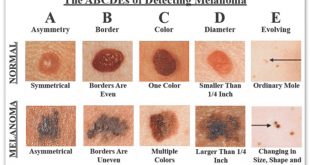By Janice Martin, Senior Advisor / Family Liaison
 Long Term Care Insurance is the best resource for helping to reduce the cost of senior living. These policies have been around for decades and there are many different types of benefits. Most require that you need assistance with at least two Activities of Daily Living (ADLs). ADLs include bathing/showering, dressing, hygiene/grooming, transferring (i.e. from a bed to a chair), toileting/incontinency, assistance with feeding. Often assumed in error, medication management and cooking are NOT considered ADLs.
Long Term Care Insurance is the best resource for helping to reduce the cost of senior living. These policies have been around for decades and there are many different types of benefits. Most require that you need assistance with at least two Activities of Daily Living (ADLs). ADLs include bathing/showering, dressing, hygiene/grooming, transferring (i.e. from a bed to a chair), toileting/incontinency, assistance with feeding. Often assumed in error, medication management and cooking are NOT considered ADLs.
There may be an elimination period until benefits begin. Some policies have no elimination period, some have one or three months, while most have a 90 day. Elimination periods may sometimes be used with in-home care. Some policies will pay for in-home care; others stipulate that you must be in an assisted living community or long-term skilled nursing.
Some policies have a specific amount of time that it will pay and/or financial amount they will pay. Some will pay for a lifetime with no maximum! It’s important to read the deck page that summarizes your limits and terms.
In most cases, if you do not use your policy and should die, you have lost your entire investment! There are many cases where people pay absolutely nothing to live in an assisted living community because of the type of policy they have. Far too often, many people who desperately need care put off receiving the benefits because they insisted on staying in their own home. Once approved for benefits, the premiums stop.
There is an alternative called a Hybrid Long Term Care Insurance. Rather than pay a monthly premium, it is purchased with one lump sum to be used for long term care. If the policy is never used, your heirs will receive a tax-free life insurance benefit.
Some Life Insurance policies can be written to help pay for long term care. This reduces the amount of the death benefit but can be a wonderful resource when needed.
Veteran’s Aid and Attendance is a wonderful benefit that is made possible for eligible Veteran’s and/or their surviving spouse.
A Veteran or his/her survivor must meet ONE of the following conditions:
• Be at least 65 years old and served at least 90 days
of active service including at least one day of active
service during a period defined as “war time”.
• Need assistance with Activities of Daily Living.
• Be bedridden
• Be a resident of a long-term care community
The Veteran must have served during the following dates with an honorable discharge*:
• World War II – December 7, 1941 – December 31, 1946. If the Veteran was in service on 12/31/1946 with continuation of service before 6/26/1947, it is considered WWII service.
• Korean War – June 27, 1950 – January 31, 1955
• Vietnam War – November 1, 1955 – May 7, 1975 – Veteran must have served in country in Vietnam
• Vietnam War – August 5, 1964 – May 7, 1975 – Veteran did not need to serve in country
• Persian Gulf War – August 2, 1990 through a date to be determined by Presidential proclamation or law Benefit amounts*
• Veterans who do not have a spouse or dependent may receive up to $2,050 a month
• Married veteran may receive up to $2,431 a month
• Surviving spouse without any dependents may receive up to $1,318 a month
• Veteran who is married to another Veteran may receive up to $3,261 a month
In 2022 the net worth limit to receive benefits has been increased to $138,489. This includes savings and checking accounts, mutual funds, stocks, and vacation homes. The primary home does not count towards the limit.
There is a 3-year look-back period for assets that have been gifted to not exceed the net worth limit. This rule became effective October 18, 2018 and does not include transfers made before this date. If a veteran or their surviving spouse gives away assets or sells them under fair market value during the 3-year look-back before applying for the benefit, a 5-year penalty may result.
Filing for the benefit is very specific and if not done correctly will be rejected. It is important that you get help from a professional VA planner, an attorney, or a company specializing in the application process. It can take months to be approved. However, the benefits are retroactive to the date of the application.
You will need to have a copy of the Veteran’s DD214 to apply. If you have lost it, the VA can assist in getting a new one, but it will delay the process.
We at Senior Liaison of Central Florida can be your advocate during the process of how to search for senior living communities and to utilize your benefits. We can also connect you with companies specializing in the Aid and Attendance benefit process.
Allow Senior Liaison of Central Florida to be “Your Guide Through the Chaos!”
Senior Liasion
352-477-1866
seniorliaisoncfl.com
seniorliaisoncfl@gmail.com
*Information obtained from AmericanVeteransAid.com
on 8/16/2022. For additional information, visit
https://americanveteransaid.com/newblog/va-aid-and-
attendance-benefit-rates-for-2022/
For more information, call Janice Martin at 352-477-1866 or visit www.SeniorLiaisonCFL.com
 Central Florida Health and Wellness Magazine Health and Wellness Articles of the Villages
Central Florida Health and Wellness Magazine Health and Wellness Articles of the Villages



